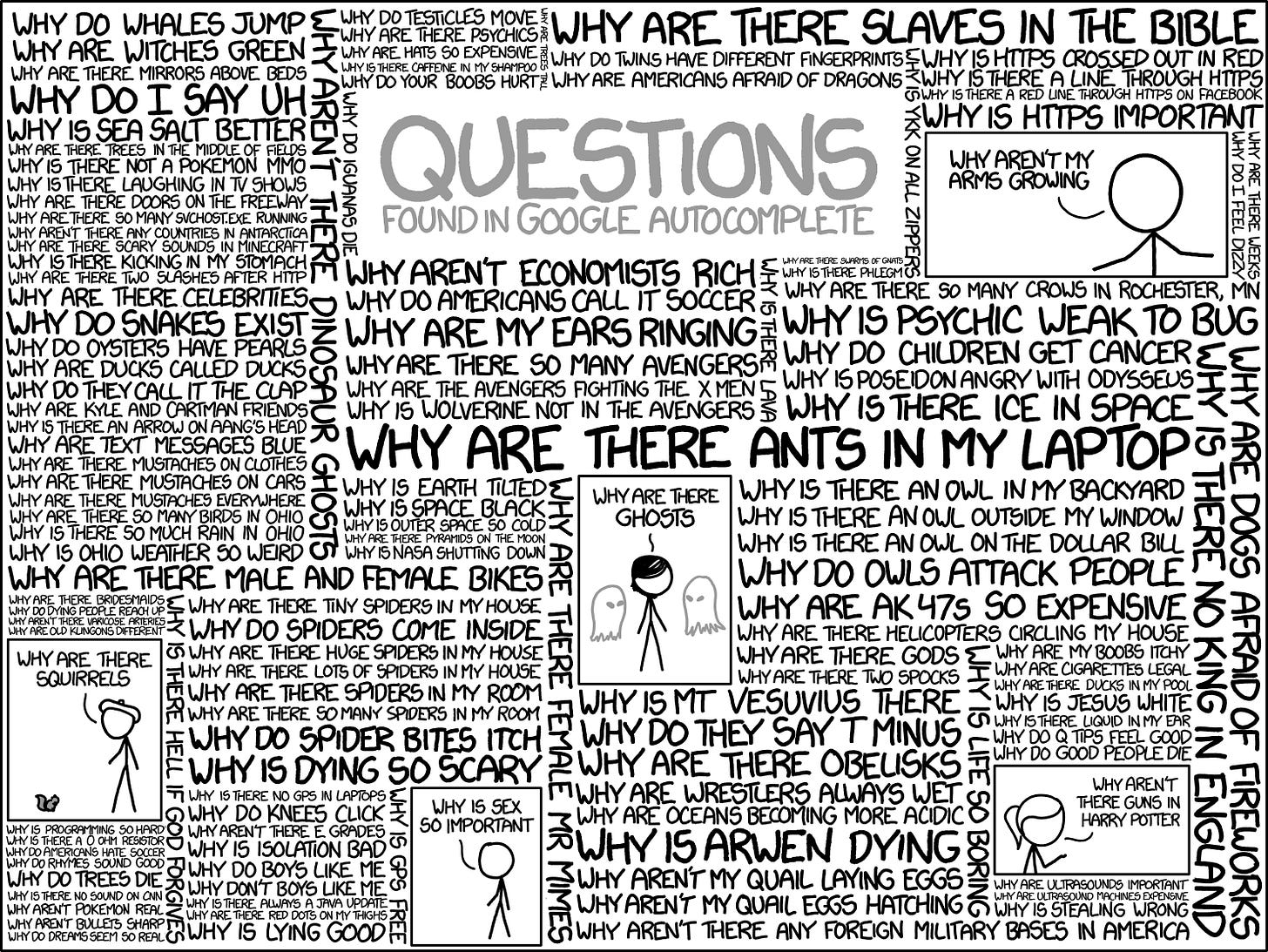Better questions for impactful outcomes
A framework for asking effective questions
Asking good questions is an often-overlooked skill. It can help in:
User research interviews,
Customer development meetings,
Job interviews both as the candidate and the hiring manager,
Q&As with senior leadership in your organisation,
Development and growth conversations with your team,
With stakeholders to understand goals.
In difficult situations, with enough questions, you can begin to understand the root cause of a problem. It’ll lead you to focus your efforts on the right thing.
Source: XKCD
This framework is easy to remember and can help you when you are stuck on how to best ask an open question.
The difference between open and closed questions
Open questions - allow the other person to fill in the gaps and answer the question as they see fit. It may allow for more details or give you the information you did not expect.
Typical open questions use - who, what, when, where, why, how (WWWWWH).
E.g. What do you do during a work day?
Closed questions - ask for a yes/no answer. They tend to be focused on getting a clear and direct answer and for validating a hypothesis you had.
E.g. Did you do that?
TED - the framework
Tell me…
A user experience research interview example - E.g. “Tell me a time when you struggled with forgetting your password.”
Explain….
A developmental conversation with your team member - E.g. “Explain where you want to grow in your role.”
Describe…
A hiring interview example - E.g. “Describe the organisational culture and when/where it is demonstrated.”
TED makes it easy to remember when you are stuck or find it hard to phrase the question in an open way. Sometimes you might use it when you’re a bit sick of using who, what, when, where, why, how. For me, I remember the bear 🧸, but sometimes remembering the acronym TED is enough.
Other tips for asking questions
This is useful particularly when doing UX research but also could work in some scenarios.
Avoid asking about typical days. Sometimes a day isn’t typical and relies on someone’s memory to reconstruct an imaginary day. Instead, ask about a specific day - e.g. Mondays, today, yesterday.
Give the other person a chance to answer your question. Avoid jumping in when there is silence. Instead, let them have a moment to think and be OK with a pause.
If you have an interview script, and it’s not usability, buffer in some time to go off-script. Sometimes the real gems of insights come when you least expect them.
Skip asking about preferences, if possible. Sometimes people will answer with what they think you want to hear or may give a flippant answer. When it comes to UX research, it’s about need and use.
Clarifying questions are good to make sure you understand the response. You could either repeat back or paraphrase what the person said and see if that is correct. Or, you can ask for more details, examples or information.
Sometimes when researching a problem space, you have to ask around it. Avoid asking directly “do you have a problem with this?”. It's a closed question. It’s also highlighting a problem someone might not even consider an issue. Instead, keep it open e.g. ``explain to us how you do this task”. A more open question might uncover pain points, workarounds and hacks which indicate an issue or opportunity.
Always give your participant a chance to ask questions. They might have some thought-provoking questions or want to understand what goes into making what you’re working on.
Tone matters. These questions are meant to be neutral but the “why” questions can get people to become defensive if not spoken in a certain way.
⭐️ Thank you for reading the article! You can help us:
✅ Subscribe using this button
✉️ Share this directly with your peers and others who will find this helpful
💬 Share this article on your Social Media (Twitter (we’re @readaskwhy), LinkedIn)


